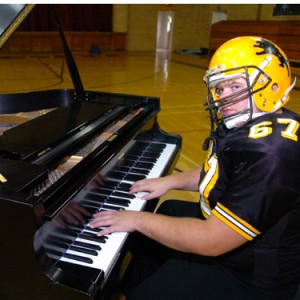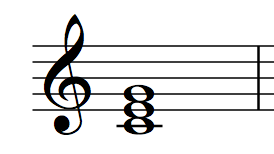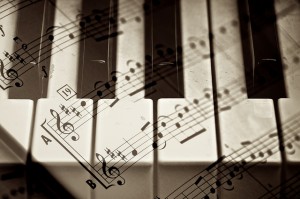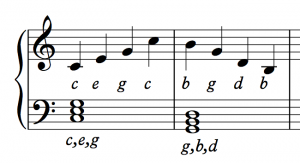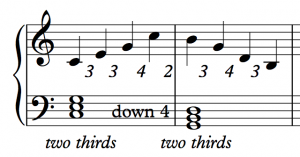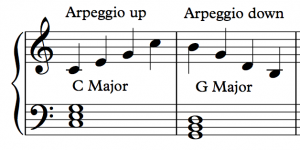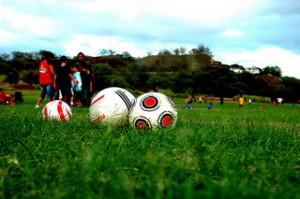By: Aaron Zimmerman
In this post, I’ll list and briefly explain different types of scales commonly used in music today. I’ll break them into 4 categories, Common, Symetric, Modal, and Other.
Common Scales
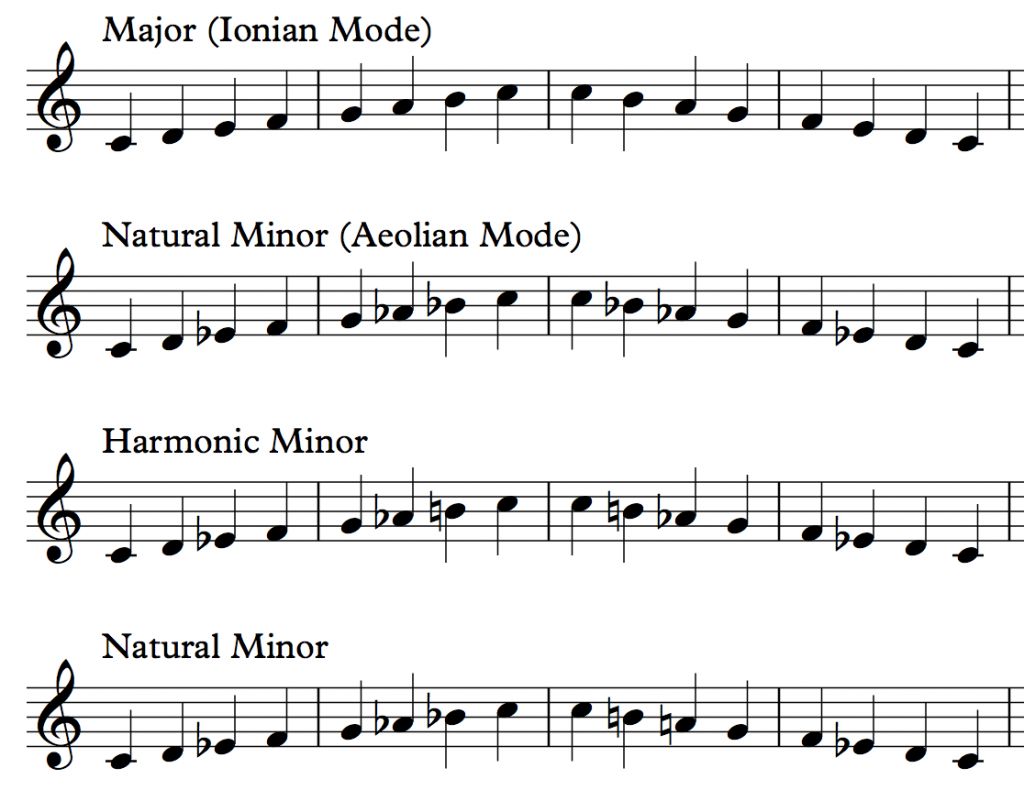
Common Scales
Major is the best known scale. The key characteristic is the major 3rd (E) and a seventh that is a half step down from the root (B). It is a pattern of whole steps W-W-H-W-W-W-H.
Natural Minor is identified by lowered third, sixth, and seventh (when compared to a major). Natural minor keys share key signatures with the major chord that is 3 half steps higher. That is, A Minor has the same key signature (no sharps or flats) as C Major, the note 3 half steps higher. A Minor is the relative minor of C Major. Eb is the relative major of C Minor (above).
Harmonic minor is a natural minor with a raised 7th degree. In a minor key, we usually use a major V chord to create a stronger V-I cadence. In C minor, the V chord is G Major (with a B natural, even though B is flat in the key signature). This creates a clash between a melody using the natural minor scale, and an accompaniment playing a major V chord. So the harmonic minor scale addresses this by adjusting the scale to be what the harmony expects.
Melodic Minor is a comprise between the natural and the harmonic minor scales. When descending, the scale is identical to a natural minor scale. When ascending, the 6th and 7th are both raised a half step (from the natural minor). This allows for smoother voice leading (no jumps in melodies that move up and down the scale), while maintaining compatibility with harmonic progressions.
Symmetric Scales
These scales are based on symmetric, repeating patterns of intervals. It is the asymmetric-ness of the major and minor scale that give it a strong sense of tonic, of a “home” key. As these scales are symmetric, they do not have a strong tonic. If you start a C Major scale in the middle, after a few notes, it is still clearly a C Major scale. Whereas, there is no “middle” to a symmetric scale, wherever you start, you start.
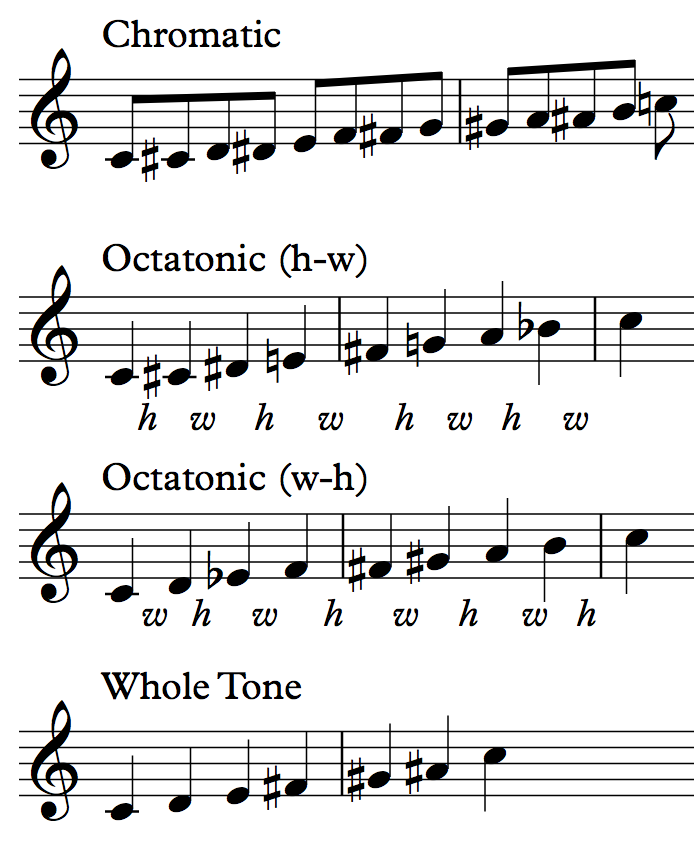
Symmetric Scales
The chromatic scale features every note. It is made up entirely of half steps. Rimsky-Korsakov’s “Flight of the Bumblebee” makes heavy use.
The whole tone scale consists of only whole steps, so it contains 6 notes. There are two whole tone scales. That is, the whole tone scale that starts from C is the same collection of notes that starts from D. Likewise, C# and D# whole tones scales share the same pitches. Stevie Wonder’s “You Are the Sunshine of my Life” uses an ascending whole tone scale in the introduction.
The octatonic scale is formed by alternating half steps and whole steps. This leads to a scale of 8 notes, hence the name. You can further classify an octatonic scale by whether it starts with a whole step or a half step). The introduction to Radiohead’s “Just” uses a whole-half ascending octatonic scale.
Modal Scales
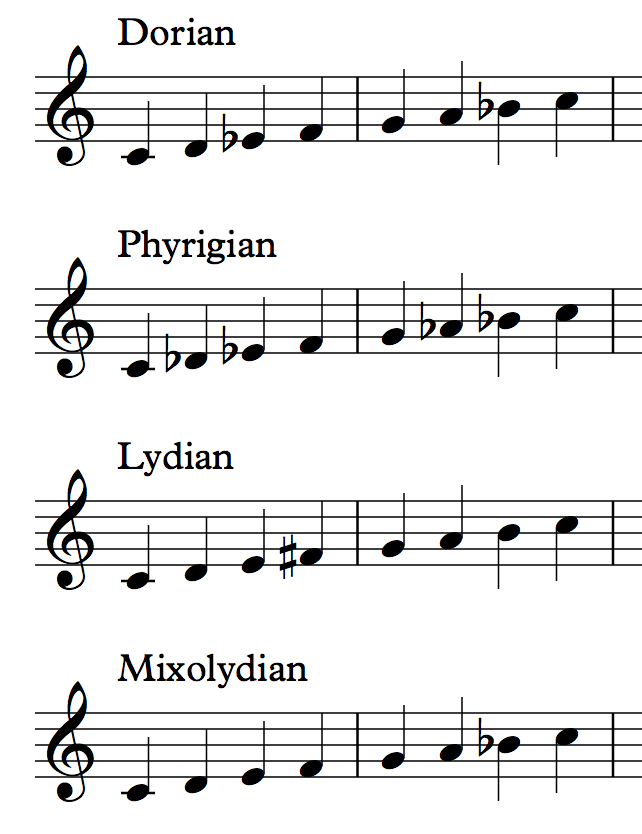
Modal Scales
The concept of modes comes from ancient greece, where modes were given names due to regional associations. Today modal scales are used a lot in jazz. When improvising over a given chord progression, it can be helpful to play the notes from a mode whose notes go well with a particular chord progression.
Dorian is a natural minor scale with the sixth raised one half step. The key distinction between dorian and minor is that a dorian mode will have a major IV chord, whereas minor will have a minor iv. (In C Dorian, you have a F Major chord, whereas in C Minor, you’d have F Minor).
“Billie Jean” by Michael Jackson is an example of a dorian piece.
Phrygian is a natural minor with a lowered second degree. It is featured in this piece “Phrygian Gates” by John Adams.
Lydian is a major scale with a raised 4th degree. The Simpsons main theme song is an example. Listen for the raised fourth degree, it is the second note you hear, on the first half of the word “Simpsons”, and again the third note of the wordless melody
Mixolydian is a major scale with the seventh lowered a half step. It is characterized by the presence of a flat-seventh chord rather than a diminished. In C Mixolydian, the VII chord is a Bb major, whereas in C Major, it is a B Diminished.
Gun’s N Roses “Sweet Child of Mine” is predominantly in Mixolydian.
Other
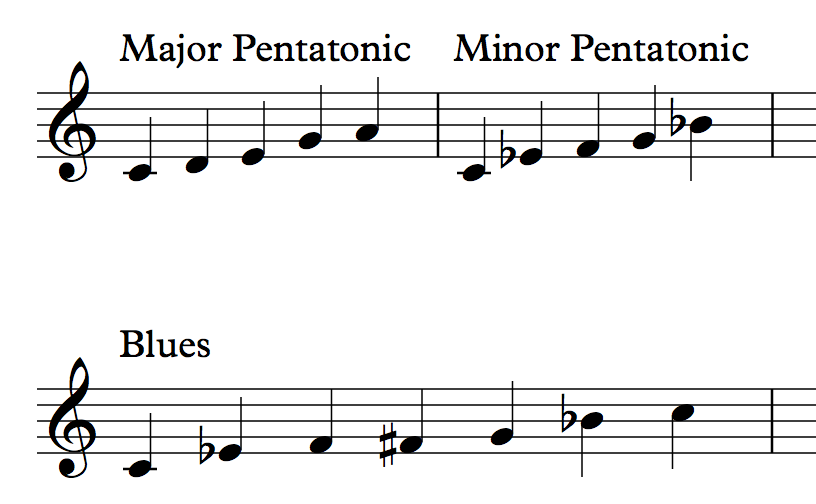
Other Scales
Pentatonic is more of a classification than an actual scale. Taken literally, it just means a scale with 5 notes. However, two pentatonic scales have emerged that, without further qualification, ‘pentatonic’ probably refers to. One sounds vaguely major, the other minor.
The first two lines of the folk song “Oh Susanna” use the pentatonic scale.
The blues scale is featured heavily in the genre of the same name. It is used extensively in blues improvisations, as each of its notes can sound consonant with the 12 bar blues. Pretty much every blues piece uses this scale, here’s Clapton with “Crossroads”, jump to 1:28 for the guitar solo
